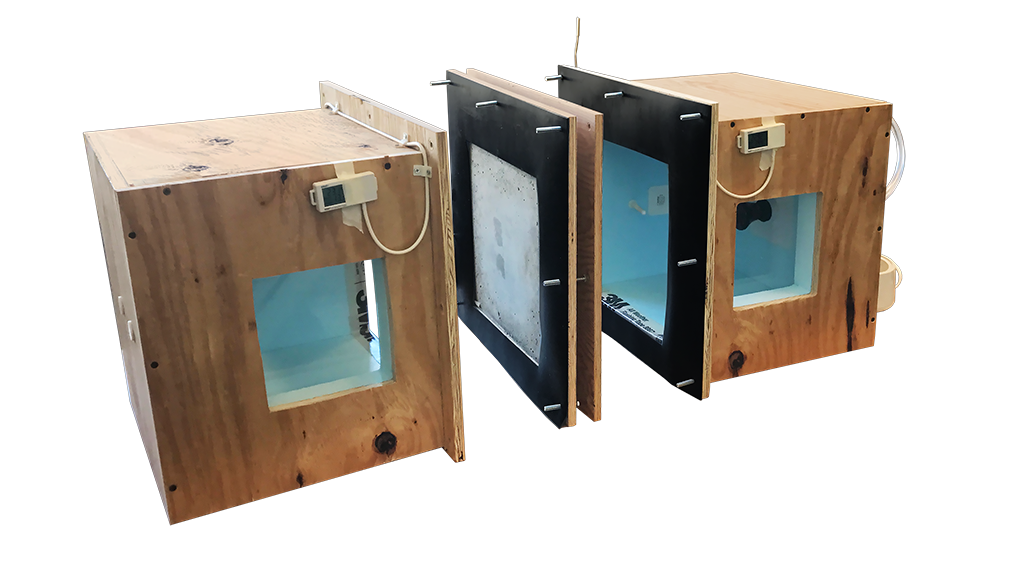High-Performance, Low-Tech is a course offered through the School of Architecture at the University of North Carolina Charlotte
The direct effects of climate change are expected to be most severe in rapidly developing regions, particularly those currently supporting largely rural populations, such as in the Tropics. Even beyond economic indicators, the Tropics lag in health, education, energy, productivity and technology. Many of these regions still have limited access to reliable and affordable energy services, which is a critical indicator of global development. In architecture and construction, diffusion is evident in the ubiquitous building styles and materials emerging in urban centers across the globe - the all-glass tower has emerged in India, the Middle East, Southeast Asia and many other regions, regardless of context and climatic conditions. In fact, the universal adoption of air conditioning, tall buildings, and curtain wall technology all within the span of a single generation, has created incredible impacts on the urban sense of place as well as on global energy consumption. In fact, Ian McCallum, the executive editor of Architectural Review, described the curtain wall as “the new vernacular” in 1957 - It was at this juncture in time that the façade became a thin, passive recipient of differential conditions between inside and out, isolated from cultural context.
In response, this class explores the vernacular strategies associated with rapidly urbanizing tropical regions in order to translate their character, physical qualities and thermal capabilities to a commercial scale, reducing the reliance on energy-intensive mechanical systems while developing a new, climate and culture-specific urban identity. By combining students from across the UNCC campus, this interdisciplinary course strives to bridge the gap between design and the hard sciences. Students will explore ways to understand, visualize and communicate basic thermodynamic phenomena in physical and tangible ways.
Working either independently or in small teams (depending on shared interest), students will design, build, and conduct physical experiments to explore ideas inspired by the tropical vernacular. Students will write about their processes and findings using the scientific method, though the intent of these experiments is to identify and articulate phenomena, not to quantify specific heat and mass transfer values. Finally, students will develop a ‘modern’ version of their vernacular analog that they can study on their constructed device. This will be a making-intensive course, however no previous construction or fabrication experience is required. The course is open to students of all disciplines with a basic understanding of thermodynamic principles in buildings & materials.
For more information, contact Professor Liz McCormick,
[email protected], 704-687-0111
The direct effects of climate change are expected to be most severe in rapidly developing regions, particularly those currently supporting largely rural populations, such as in the Tropics. Even beyond economic indicators, the Tropics lag in health, education, energy, productivity and technology. Many of these regions still have limited access to reliable and affordable energy services, which is a critical indicator of global development. In architecture and construction, diffusion is evident in the ubiquitous building styles and materials emerging in urban centers across the globe - the all-glass tower has emerged in India, the Middle East, Southeast Asia and many other regions, regardless of context and climatic conditions. In fact, the universal adoption of air conditioning, tall buildings, and curtain wall technology all within the span of a single generation, has created incredible impacts on the urban sense of place as well as on global energy consumption. In fact, Ian McCallum, the executive editor of Architectural Review, described the curtain wall as “the new vernacular” in 1957 - It was at this juncture in time that the façade became a thin, passive recipient of differential conditions between inside and out, isolated from cultural context.
In response, this class explores the vernacular strategies associated with rapidly urbanizing tropical regions in order to translate their character, physical qualities and thermal capabilities to a commercial scale, reducing the reliance on energy-intensive mechanical systems while developing a new, climate and culture-specific urban identity. By combining students from across the UNCC campus, this interdisciplinary course strives to bridge the gap between design and the hard sciences. Students will explore ways to understand, visualize and communicate basic thermodynamic phenomena in physical and tangible ways.
Working either independently or in small teams (depending on shared interest), students will design, build, and conduct physical experiments to explore ideas inspired by the tropical vernacular. Students will write about their processes and findings using the scientific method, though the intent of these experiments is to identify and articulate phenomena, not to quantify specific heat and mass transfer values. Finally, students will develop a ‘modern’ version of their vernacular analog that they can study on their constructed device. This will be a making-intensive course, however no previous construction or fabrication experience is required. The course is open to students of all disciplines with a basic understanding of thermodynamic principles in buildings & materials.
For more information, contact Professor Liz McCormick,
[email protected], 704-687-0111
